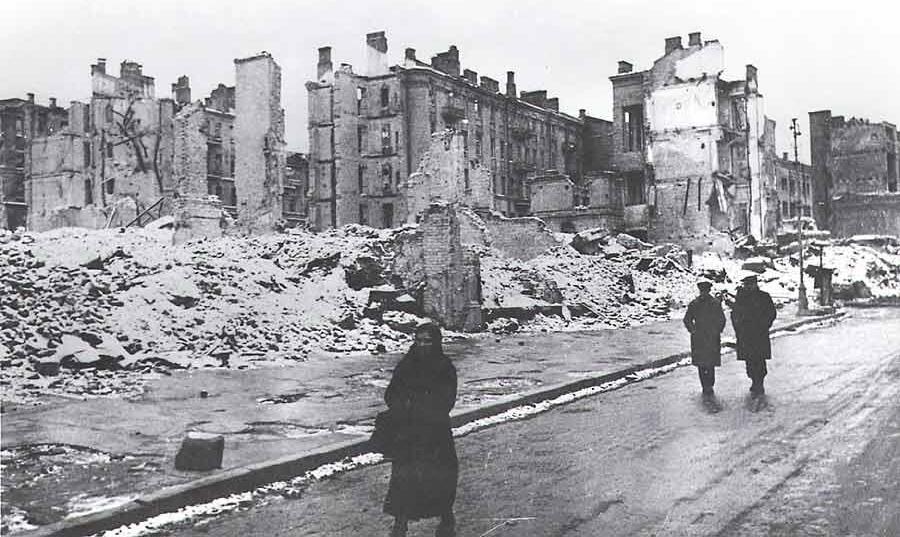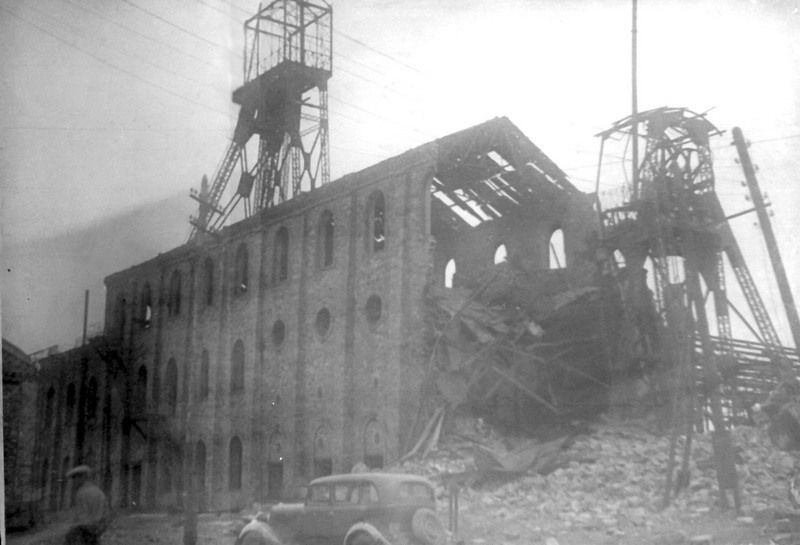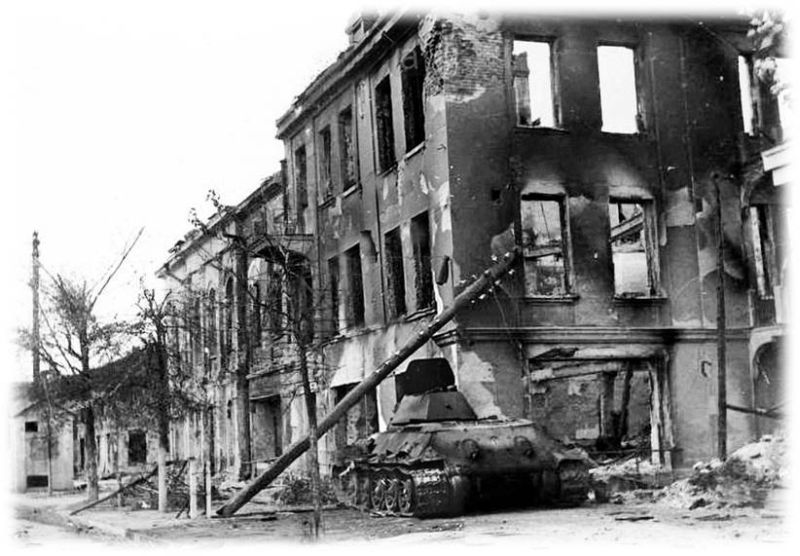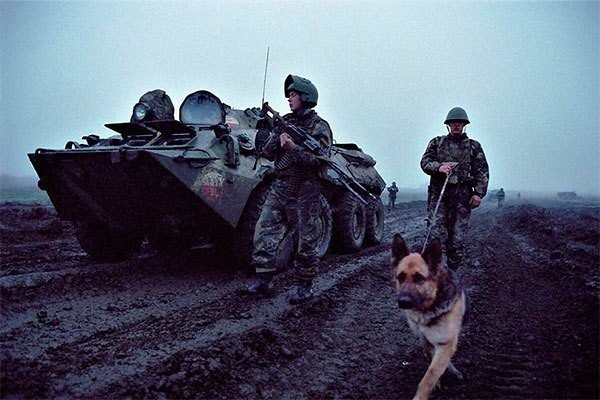
However, in a historically short time, the country got back on its feet and conquered new heights.
By the fall 1945 g. a year has passed since the last invader was expelled from Soviet soil, but the scale of the crimes of the German Nazis and their accomplices was so great, that only to 13 September, it was possible to complete the calculation of the material losses of the Soviet Union in the war. On that day, a message from the Extraordinary State Commission was published in the Soviet press. About material damage, caused by the Nazi invaders to state enterprises and institutions, my collective farm, public organizations and citizens of the USSR".
ChGK initiative (its full name is the Extraordinary State Commission for the Establishment and Investigation of the Atrocities of the Nazi Invaders and Their Accomplices and the Damage They Caused to Citizens, my collective farm, public organizations, to state enterprises and institutions of the USSR) belonged to the Central Committee of the CPSU(b). In July 1942 g. head of the Propaganda and Agitation Department of the Central Committee G.F.. Alexandrov sent the People's Commissar for Foreign Affairs V.M.. Molotov, secretaries of the Central Committee A.A.. Andreev, G. M. Malenkov and A.S.. Shcherbakov a draft resolution of the Central Committee and a cover letter, which substantiated the need to create an Extraordinary State Commission. investigation, which up to that time were carried out on their own initiative by the military and civil authorities in the field, were scattered, despite the fact that this work needed to be given a nationwide character.
2 November, such a commission was created by decree of the Presidium of the Supreme Soviet of the USSR. The ChGK was responsible for collecting documentary data, check them and, as necessary, publish materials on Nazi crimes and material damage. With such a big task, of course, could not handle the state, not counting and 120 human, therefore, servicemen of the Red Army were widely involved in the preparation of acts, representatives of the Soviet, economic, trade union, cooperative and other public organizations, working, farmers and employees.
The commission included well-known people throughout the country: Academicians of the Academy of Sciences of the USSR writer A.N.. thick, neurosurgeon N.N. Burdenko, lawyer I.P. Trainin, Metropolitan of Kiev and Galicia Nicholas (Yarushevich), Hero of the Soviet Union pilot V.S.. Grizodubova, member of the Politburo of the Central Committee of the CPSU(b), First Secretary of the Leningrad Regional Committee and City Party Committee A.A.. Zhdanov and others. The head of the Soviet trade unions N.M.. Schwernik. All work was supervised by the Deputy Chairman of the State Defense Committee, Deputy Chairman of the Council of People's Commissars of the USSR V.M.. Molotov.
In March 1943 g. Republican, territorial and regional commissions, whereby efforts to identify and investigate the crimes of the Nazi occupation regime and damage, inflicted on the national economy of the USSR, acquired an all-inclusive, systematic.
The work has been tremendous: only in terms of identifying material damage, ChGK considered about 4 million acts.
The final calculations showed, that during the years of World War II the Soviet Union lost about 30% wealth of the country. Losses only from direct destruction and looting of property (indirect damage was not taken into account) was 679 billion rubles, including state-owned enterprises and institutions - 287 billion, collective farm - 181 billion, cooperative, trade unions and other public organizations 19 billion, rural and urban residents 192 billion rubles.
The figures below are widely known., repeatedly reproduced in textbooks and scientific papers. They entered there precisely from the materials of the ChGK: Nazi vandals completely or partially destroyed and burned on Soviet soil 1710 cities and towns, more 70 thousand. villages, over 6 million buildings, homeless about 25 million people, destroyed approx 32 thousand. industrial enterprises and 65 thousand. km of railway tracks, destroyed 98 thousand. collective farms, 1876 state farms, 2890 machine and tractor stations.

In areas occupied by the enemy, it was disabled 62 domain and 213 open-hearth furnaces, destroyed 1135 coal mines, which annually produced over 100 million tons of coal, more 3 thousand. oil wells with annual production up to 5 million tons, power plants with a total capacity of approx. 5 mln kW and many other economic facilities.
Agriculture has been hit hard. The invaders destroyed, taken away or stolen to Germany 7 million horses, 17 million heads of cattle, 20 million heads of pigs, 27 million head of sheep and goats, a huge number of poultry.
The extremely high scale of the destruction of the national economy was reflected in the following figures: in the territories of the USSR, occupied, by the time of liberation, the share of surviving industrial enterprises was only 17%, including in the liberated regions of the RSFSR - 13%, in Ukraine - 19%, in Belarus - 15%, Moldova - 49%, in the Baltic republics 32%.

And the sphere of culture? Nazis, attacked the Soviet Union, pursued not only military and political goals, but also sought to destroy the centuries-old culture, eradicate the historical self-consciousness of the peoples of the USSR. Monuments of world culture in Leningrad and its suburbs were looted and destroyed, in Novgorod the Great, Pskov, Smolensk, Tver, Kiev, Kharkov, Kursk, Sevastopol, Odessa, Rostov-on-Don and many other cities. Art and local history museums were looted, library, archival repositories. Hundreds of thousands of works of art were exported from the RSFSR alone, collected in domestic collections for more than one century.
In the last two or three decades, a number of foreign and Russian authors have questioned the authority of the ChGK., at the same time, the investigation by the commission of Academician N.N. was chosen as the reason. Burdenko of the fact of the execution of Polish officers in Katyn. The so-called Katyn case belongs to the first of the functions of the GChK and requires a separate discussion.. As for the function of the second - to establish the scale of damage, then you can safely say, that the committee did its job well.. The results of the commission's work were not subjected to any significant revision by later studies..
Yes, the organization of such work was not and could not be ideal in wartime conditions. Member of local committees (at enterprises, on collective farms, etc.. P.) often included underqualified, and even illiterate people, the damage from the occupation was sometimes written off and the facts of negligent management of local authorities. Material losses, arising as a result of the forced destruction of property by parts of the Red Army during the retreat, assigned to the invaders, what, strictly speaking, was incorrect. However, it is incorrect only in an accounting sense.. After all, the root cause, which prompted the Soviet people to blow up factories and power plants, destroy crops, etc.. P., there was enemy aggression.
And you can only bow your head to the older generations, thanks to whose work the country, lost almost a third of the national wealth, in a historically short time was able to stand up and conquer new heights.
Yuri RUBTSOV











